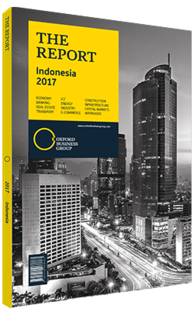Simon Linge, President Director, Bluescope Steel Indonesia: Interview

Interview: Simon Linge
What is your view on the steel industry’s prospects for the next 12 months?
SIMON LINGE: For the global steel industry, as for Indonesia’s, 2015 was a tough year. As China’s spending on infrastructure slowed, the oversupply of crude steel led to increased exports. This translated into a decline in pricing globally and excess supply in Indonesia. The volatility of the rupiah has also affected foreign direct investment and caused prudence in the local markets.
The slowdown in the economy and uncertainty in infrastructure projects damaged some segments in steel products, although the retail sector proved more resilient. In 2016 we can feel a growth sentiment, with government initiatives starting to accelerate and bureaucracy being tackled. These are positive signs and the acceleration of infrastructure plans can be a growth driver for the steel industry. In addition, we expect the increase in joint ventures between local and foreign players to enhance the transfer of technologies, supporting local industries and companies to increase their competitiveness in the market, especially with the increasing urbanisation that will require secondary cities to evolve.
How can private players in construction materials be involved in public-private partnership (PPP) infrastructure projects?
LINGE: The government is aiming for 50% of infrastructure development in the 2016-19 budget to come from PPPs, so the role of these will increase in the next few years. However, most private companies are still waiting for the government to state clear regulations and policy governing the involvement of private players in this sector.
Acceleration on policy- and regulation-making in this sector will benefit the overall acceleration in infrastructure development. The government also needs to ensure that all stakeholders have the chance to participate in development through the upcoming projects. We are optimistic that the coated steel market in Indonesia will keep growing with the growth of infrastructure, so there will be more investment in the coated steel segment.
We see the competition in the market as an encouragement to improve our products, technology and services. Imported steel is likely to grow as countries like China and Vietnam export their surplus capacity. Often these imports are being unfairly dumped into the market. This is an issue which requires trade remedies. We are not opposed to imports. We embrace competition; it helps with innovation. The ASEAN Economic Community should be seen as an opportunity. Assuming goods are fairly traded, it will allow us to be competitive and to supply our products across the region. The challenge is making sure market distortions like tariffs are removed.
What factors are currently driving the coated steel market in Indonesia?
LINGE: The potential is still promising for the coated steel market in Indonesia, where steel consumption per capita is considerably lower than in other ASEAN markets. The sector needs to help Indonesian consumers to protect the value of their investment by using high-quality roofing and roof trusses. Consumers are beginning to switch to coated steel as the main material for roof frames, but still many owners and builders do not realise the importance of quality in choosing the materials needed to build a safe and comfortable home. Roofing is critically important.
Demand for coated steel products is expected to rise by a compound annual growth rate of 5% over the next five to 10 years, and we are positive that we can grow faster than the market overall.
You have reached the limit of premium articles you can view for free.
Choose from the options below to purchase print or digital editions of our Reports. You can also purchase a website subscription giving you unlimited access to all of our Reports online for 12 months.
If you have already purchased this Report or have a website subscription, please login to continue.

